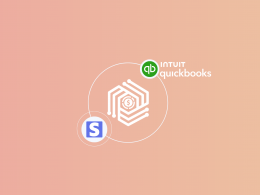Welcome to a journey through the innovative corridors of Stripe Payment Links, a tool that simplifies and secures online payments, offering both businesses and customers a seamless pathway to transact in the sprawling ecommerce landscape.
This guide will illuminate the technical how-tos of integrating Stripe Payment Links into your business endeavors. Whether you are a blossoming startup, a non-profit organization, or a seasoned ecommerce titan, let’s embark together on a journey that promises enriched customer experiences, fortified security, and amplified transactional efficacy.
To seamlessly and accurately sync all your Stripe Payment Links transactions into your accounting software, check out Synder.
What are payment links?
A payment link is a URL that facilitates online transactions, providing a streamlined and user-friendly way for customers to make payments for goods or services without navigating through a complex online shopping platform. Essentially, a payment link directs the customer to a secure payment page where they can complete their purchase by entering their payment details.
How payment links work for business owners and customers
Here’s a simplified breakdown of how a payment link typically works.
Create and post a payment link
The seller/business generates a payment link using a payment gateway or a financial service provider platform, like Stripe. The link is associated with a specific product/service and its pricing details. The business shares this link with customers through various channels – such as email, social media, SMS, or even QR codes in physical locations.
Use a payment link
Customers click on the payment link or scan the QR code, which redirects them to a secure payment page. They enter their payment details (credit/debit card information, digital wallet, etc.) and complete the transaction. Upon successful payment, customers typically see a confirmation message and receive a receipt via email or text message. The business also receives a notification of the successful payment.
Payment links, including Stripe Payment Links, are particularly useful for small businesses, freelancers, and any scenario where a full-fledged ecommerce platform may not be necessary or feasible. It offers a quick, secure, and accessible way to handle transactions, making it easier for customers to purchase and for businesses to sell their goods or services (of course, large businesses can also successfully use payment links to broaden their payment offer).
Stripe payment solutions: What are Stripe Payment Links?
A Stripe Payment Link is a method that allows you to create a pay button linked to a secure checkout page, which you can share with your customers through various platforms, ensuring that the payment process is as simplified as possible.
Stripe’s Payment Links lets you generate a dedicated payment page and disseminate its link to your customers via numerous channels, including social media and emails, with unlimited sharing capabilities. Supporting over 20 payment methods such as credit/debit cards, Apple Pay, and Google Pay, it ensures a versatile payment experience. Furthermore, the payment page is available in over 30 languages and intuitively adapts to your customer’s browser language preference, ensuring a seamless and user-friendly transaction process.
These links serve as a direct gateway to a simplified checkout page for your customers, without necessitating a full-fledged online store setup. Whether you’re selling bespoke creations on Instagram, offering freelance services, or running a local store wanting to expand online, Stripe Payment Links cater to diverse transactional needs.
Want to learn more about Stripe? Check out our guide to Stripe.
How to create your first payment link?
Creating a payment link with Stripe is a simple process designed with user-friendliness in mind. Below is a step-by-step guide to creating a payment link using Stripe.
Prerequisites: Stripe account and product/service details
Ensure you have a Stripe account. If not, sign up and complete the necessary verification processes to activate your account. Also, have details of the product or service you’re selling ready, including pricing, images, and descriptions.
Step-by-step guide to creating a link
Step 1: Log into your Stripe dashboard.
Navigate to the Stripe website and log into your account. Access your Stripe dashboard to manage and create payment links.
Step 2: Navigate to the “Payment Links” section
Once in the dashboard, look for a section called Payment Links. Select the product or create a new one by clicking +Add a new product.
Step 3: Create a new payment link
Click on the Create link button to initiate the creation of a new payment link.

Customization and branding
Stripe lets you easily customize the checkout experience when you set up payment links. Let us review the most crucial elements of customization and branding.
How to brand your checkout page?
To brand your checkout page in Stripe Payment Links, you can customize several elements to align with your business’s branding, which can be done via the Stripe Dashboard:
- Logo or icon: Upload your business logo or an icon.
- Colors and fonts: Customize the background color, button color, and choose your preferred font and shapes for your payment page.
- Use your own domain: If you have a custom domain, you can create links using your own subdomain instead of Stripe-branded payment links.
- Store policies and contact information: You can display your return, refund, and legal policies on the payment page as well as your support contact information.
What information can you collect at the checkout?
You can collect various types of information at the checkout when using Stripe’s Payment Links.
Addresses
You can opt to collect billing addresses only, or both billing and shipping addresses. If collecting shipping addresses, you must select the countries you ship to and can optionally add shipping rates.
Phone Numbers
If necessary for the transaction, you can configure Payment Links to require customers to provide a phone number.
Business customer tax ID
To display a customer’s tax ID and legal business name on invoices, you can enable tax ID collection on your Payment Links.
Taxes
Payment Links can work with Stripe Tax to calculate and collect tax on your payments. Note that Stripe tax is a separate product that comes with its own price tag.
Agreement to terms of service
If you have set your terms of service URL in your account’s Public details, you can require customers to agree to it before completing their purchase.
Custom fields
Additional information can be collected through custom fields on the payment form, which might include text, numbers only, or dropdown options. Note that labels for custom fields are not translated.
Can I deactivate a link?
You have the ability to restrict the number of transactions through a payment link, automatically disabling it upon reaching a predetermined threshold. This functionality is particularly advantageous for managing limited stock or controlling the usage of links. Upon reaching the established transaction limit, the payment link is automatically turned inactive, preventing customers from completing purchases. It’s essential to include a specialized message upon deactivation. Stripe lets sellers personalize the message for deactivated links.
Ensuring a smooth integration across platforms
Your digital presence across various platforms is a valuable asset. Stripe Payment Links can be integrated seamlessly into these spaces, ensuring that your customers can transact with ease wherever they interact with your brand. Whether embedded in emails, shared on social media, or placed on your website, these links can help maintain a cohesive buying journey.
Utilizing links in physical spaces
Stripe Payment Links aren’t restricted to digital spaces. You can generate QR codes for your Payment Links, enabling customers in your physical store or at an event to scan and pay effortlessly, thereby marrying the physical and digital realms of commerce.
Platform-wise best practices
While implementing Payment Links across different platforms, keep in mind the unique user behavior on each. For instance, while email integrations may focus on detailed communication, social media might require succinct, compelling call-to-actions.
Integrating financial records for accurate bookkeeping
To adequately manage online payments such as payment links, you need software that is capable of accurately recording this transactional data in your accounting software. Synder is a finance and accounting solution that automates the process of syncing data between different ecommerce platforms, payment processors, and accounting software. It helps sellers manage the bookkeeping for Stripe Payment Links in several ways.
Automated data synchronization
Synder accurately records every transaction processed via Stripe Payment Links, capturing all the details like customer information, item descriptions, and tax amounts. It offers 2 sync modes, per transaction sync and daily summary sync each offering distinct advantages. With its real-time synchronization feature, Synder ensures that your books are always up-to-date, reducing the need for manual data entry and minimizing errors.
Extensive ecommerce integration
Easily integrate Synder with your accounting software, payment processors (Stripe, PayPal, etc.), sales channels (Amazon, Shopify, eBay, Etsy, and more), and even POS systems providing a streamlined flow of transaction data to your financial books without manual intervention.
Reconciliation
Synder can automatically match transactions recorded through Stripe Payment Links with bank statements in your accounting software, making the reconciliation process seamless and straightforward. It helps you identify any discrepancies or potential issues in your financial data, ensuring your books are accurate and reliable.
Reporting and analysis
With Synder you can generate comprehensive financial reports that include data from transactions made through Stripe Payment Links (and all other supported platforms), providing insights into your income, expenses, and overall financial health. You can analyze the sales data to observe trends, customer purchasing behaviors, and product performance.
Handling multiple currencies
Synder supports multi-currency transactions, meaning that it can accurately categorize and convert transactions made in various currencies using Stripe Payment Links into the currency of your primary financial books.
Tax compliance
It automatically calculates the relevant taxes for every transaction processed through Stripe Payment Links, ensuring that you remain tax-compliant. By maintaining accurate records of all transactions, including tax amounts, Synder simplifies the tax filing process.
By utilizing Synder for managing the bookkeeping of transactions processed through Stripe Payment Links, businesses can ensure accuracy, save time, and gain deeper insights into their financial performance. It acts as a bridge, ensuring that every transaction is accurately reflected in your financial records, promoting efficiency, and facilitating informed decision-making.
Check Synder’s possibilities during a 15-day free trial or book our weekly public demo.
Payments optimization: transaction management and customer experience
Monitoring transactions is pivotal for financial management and understanding customer behavior. Use Stripe’s analytics to observe transaction trends, manage refunds, and ensure that your payment flows are functioning optimally.
The user journey doesn’t end post-purchase, so make sure to use clear communication with customers regarding transaction status, provide support for queries, and create a follow-up strategy to keep them engaged and foster loyalty.
Assuring customers that their transactions are secure is paramount. Stripe inherently brings robust security and compliance to the table so communicate this to your customers and increase trust in your payment process.
Conclusion
In this exploration of Stripe Payment Links, we navigated through understanding, implementing, and optimizing this dynamic tool for various transactional needs. The tapestry of digital commerce is rich, diverse, and perpetually evolving, and with tools like Stripe Payment Links, your business is empowered to navigate through this landscape with confidence, security, and user-centricity.
Here’s to seamless transactions and thriving in the exciting world of digital commerce!

.png)




